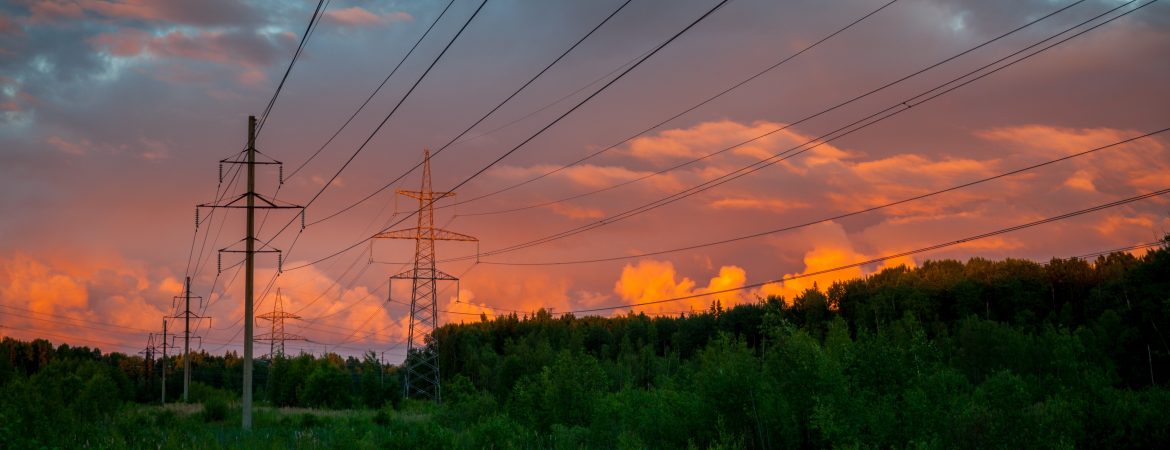Electro-Federation Canada
The Electrical Industry…Like You’ve Never Seen It Before!
Business View Magazine interviews representatives from Electro-Federation Canada, as part of our focus on best practices of American cities.
By Swati Vora-Patel, Director of Research & Communications, Electro-Federation Canada
The shift to digital systems is one of the most significant changes that society has experienced in the past century. Today, we are living in a global movement that connects everyone…to everything.
 Modern technologies help heighten the “connectivity” experience that we have all come to expect. Consider the functionality in your mobile phone, which allows you to connect on demand; making a call using your device has almost become a secondary function! New digitized features in cars are also spurring new demand among consumers’ experiences with connected solutions. There is likely more technology built into your car than an average home or office space today.
Modern technologies help heighten the “connectivity” experience that we have all come to expect. Consider the functionality in your mobile phone, which allows you to connect on demand; making a call using your device has almost become a secondary function! New digitized features in cars are also spurring new demand among consumers’ experiences with connected solutions. There is likely more technology built into your car than an average home or office space today.
The good news is that industries such as the electrical sector are bringing the promise of connected homes and work environments to reality. Driven by concepts such as Smart Cities and Net Zero homes and buildings, the electrical industry has come to recognize the new social responsibility expectations that have risen among consumers, requiring the need for connectivity in all aspects of everyday life.
Beyond creating an electrically-driven digital experience, electrical manufacturers, distributors, and installers are banding together to supply intelligent products that are:
- Innovative, to adapt to ever-growing demands such as the movement towards digitization, automation and electrification; and
- Sustainable, to preserve the environment by reducing our carbon footprint.
Electrical Innovation Meets Market Demand
Digitization
Electrical innovation is at the forefront of product development today. The industry is making great strides
to support a mass movement towards the “Internet of Things” (IoT), an intertwined network of connected “things” that bridges people-to-people, people-to-things, and things-to-things. This IoT support is critical, especially as user demand for connectivity continues to rise; it is predicted that there will be over 26 billion connected devices worldwide by 2020.
This digital transformation has opened up a whole new world of possibilities—from how electrical systems connect and operate, to how products are developed, sold, delivered, and implemented. Electrical manufacturers, distributors, and installers are reimagining the role that electrical products have, at work and at play. Everything from lighting, controls and sensors, to wiring and cable, outlets and switches are future-proofed with advanced functionality so they can be easily adapted to a host of environments and configured with integrated systems.
Intelligent Products
Homeowners and business owners, alike, are experiencing the benefits of integrated lighting, security, entertainment, and heating/cooling systems that connect with sensors and fully control features from a central point of access (a tablet or mobile phone). This functionality allows users to optimize space utilization and experience personalization by only lighting, heating/cooling areas that are in use by occupants. With the use of smart technology, significant savings can be realized by using sensors and controls that provide real-time data about space utilization, allowing lighting, temperature, etc. to be adjusted in each area of a building, based on changing occupancy needs. This also presents the opportunity to have a smaller environmental impact by reducing energy consumption, as only utilized spaces are heated and lit.
Electrification
If we move outside the home and office environments, electrification is another key trend that is taking the world by storm. Not only does electrification solve a key piece of the climate control puzzle through its use of clean energy to power transportation (planes, trains, and automobiles), as well as homes and buildings, but it also calls to attention the need for innovative products and solutions to support the infrastructure. Electrical manufacturers have responded to this need by offering solutions that span the electrical value chain—from the substation to the point of consumption. The industry’s digital and connected innovations include electric vehicle infrastructures, low- and medium-voltage products, solar inverters, switchgear, measuring and sensing devices, and control products—all of which enable safer, more efficient, and reliable power flow for electrification needs.
Automation
Automation strengthens integration between digital devices on the plant floor to the rest of the enterprise to improve overall operational efficiency. The opportunities of connected solutions first made an appearance in the Industrial segment of the electrical industry. Often referred to as the “Industrial Internet of Things” (IIOT), many factories, today, are equipped with sensors and actuators that connect various process controls to offer efficient operations of motors, pumps, fans, lighting, data networks, and other systems. This integration allows the plant, facility, and people to have an end-to-end, fully integrated view of all processes, allowing users to turn data from the plant floor into actionable sales, marketing, or operational information. With the introduction of robotics in manufacturing and distribution facilities underway, industrial automation is set to experience an even wider range of operational excellence.
The benefits of integrated systems in the Industrial sector  demonstrate the strong promise that homeowners and businesses can expect as they adopt the next cycle of system interoperability to automate personal and workplace processes.
demonstrate the strong promise that homeowners and businesses can expect as they adopt the next cycle of system interoperability to automate personal and workplace processes.
At home and in offices, one-touch control over lighting, A/V and telecommunications equipment, window coverings, temperature, and beyond, is well within reach today. In fact, as referenced earlier, a whole new segment of installers, known as system integrators, have surfaced who are trained and able to connect disparate applications over one single system interface. This new trade is in direct response to growing market needs for home and building automation, and the electrical community of manufacturers, distributors, contractors, and builders are examining ways to improve their technological skills and knowledge to address this demand. These knowledge and skillset upgrades are especially necessary given the emerging low-voltage DC power options available; safe-touch low-voltage DC is fast becoming the power of choice for many system integrations today.
These innovations are also bringing about change among those who distribute and install electrical products. The ecosystem is expanding to include a new set of players, including those who specialize in electronics and data communication. This expansion gives rise to new business models and allows the market to collaborate with other entities to offer connected solutions. The changes and resulting opportunities already evident in the electrical market today, point to a bright future—one that the electrical industry is proud to be at the cusp of.
Building a Sustainable Future
Leading jurisdictions across Canada and the United States are introducing net zero policies and programs that focus on reducing carbon emissions. With goals for LEED-certified “smart” buildings, property managers and business owners are exploring integrated and energy-efficient systems that help reduce energy costs. This focus on energy management is especially important when you consider that energy accounts for the largest percentage of costs within a building. While electrical products are known to consume energy to operate, electrical manufacturers and distributors are banding together to address this energy paradox by offering full lines of energy-efficient solutions such as LED lighting, controls and sensors, wire and cable, fuses, electric heat, and other scalable products, to support integrated, energy management infrastructures.
The electrical industry also plays a pivotal role in supporting the development of recycling programs, set to allow users to safely and efficiently dispose of certain electrical products, such as lamps, fixtures, and ballasts; batteries; power tools and outdoor power equipment—ensuring these products do not end up in landfills. Electrical manufacturers are demonstrating strong, corporate citizen leadership by supporting these programs and ensuring that provincially-mandated products are captured under an approved recycling program at the end of their lifecycle.
Through these measures, the electrical industry is building a sustainable future to help lower the nation’s energy use footprint and provide a cleaner, greener environment.
As the market moves full speed ahead with its reliance on smart, connected solutions, the Electrical industry is at the forefront of this movement by supplying and installing innovative, intelligent, and energy-efficient products that users can depend on to drive their integrated, socially-responsible experiences forward. The industry’s strong focus on electrical innovation and sustainability will inspire new possibilities that society has yet to discover!
Electro-Federation Canada (EFC) is a national association that empowers Canadian electrical manufacturers, distributors, and agents with a common voice, business intelligence, a network, and support to thrive in a changing environment.
Electro-Federation Canada represents over 220 member companies that manufacture, distribute, market and sell a wide range of electrical products, including distribution equipment, industrial controls, lighting, motors and generators, transformers, wire and cable, wiring supplies, and electric heating. Together, Electro-Federation Canada members contribute over $10B to the Canadian economy and employing approximately 40,000 workers in more than 1,200 facilities across the country. Electro-Federation Canada also maintains a strong focus on electrical safety, sustainability, advocacy, codes and standards, and also serves as a hub of networking, education, and industry research. For more information, visit www.electrofed.com.
Check out this handpicked feature on The National Electrical Contractors Association.
AT A GLANCE
WHO: Electro-Federation Canada (EFC)
WHAT: a national association that empowers Canadian electrical manufacturers, distributors, and agents.
WHERE: Canada
WEBSITE: www.electrofed.com


